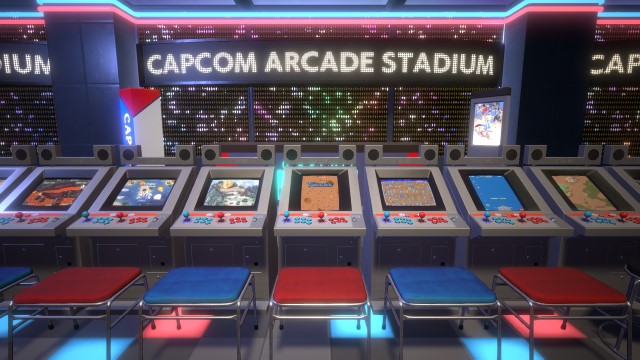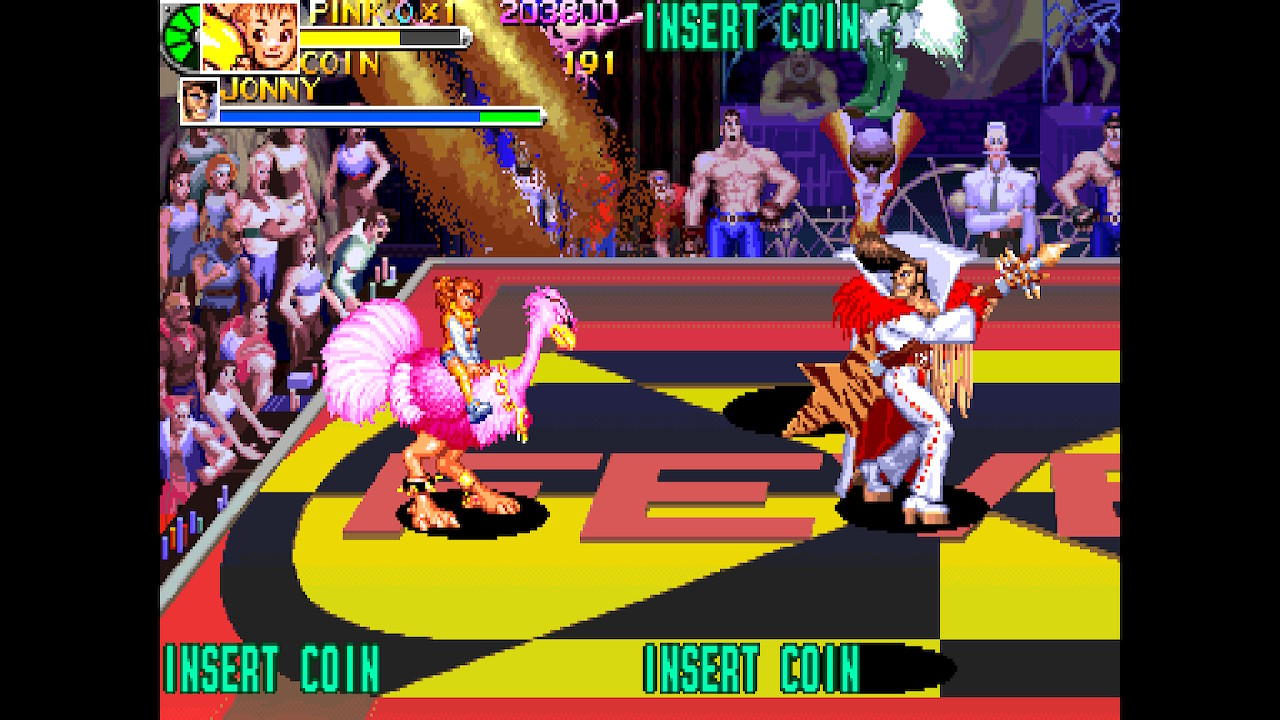Like a delightful and historic artifact of fun, Capcom’s latest collection of classic games is a wayback machine to the golden days of the arcade. This isn’t, by any stretch, the first such collection we’ve seen from them. Their last arcade collection, the Capcom Arcade Cabinet, hit during the Xbox 360 and Vita era, but it wasn’t quite as expansive as Capcom Arcade Stadium.
The 32 games in this collection represent a remarkably varied look at the sheer variety of styles Capcom released to arcades through the 80s and 90s. It’s not their complete catalog, unfortunately. A lot of 90s fighters, like Darkstalkers and X-Men: Children of the Atom are absent. But it offers some of the true coin-op greats of the era. Available as a free download with just 1943: the Battle of Midway unlocked, the collection is split into three vaguely related packs of 10 games each.
Ghosts ‘n Goblins is available as a separate download as well, complete with two-player local multiplayer, which is new. You can read my review of that over here.
Capcom Arcade Stadium Review: A Visual History of the 80s Arcade
There’s a hefty assortment of SHMUPs like Carrier Airwing, the 194X series, Gigawing, Varth, and Forgotten Worlds. They’re all fun and intense bullet-hell quarter-eaters that were a prized commodity on consoles of the day. Side-scrolling brawlers make up a significant part of Stadium as well, and it’s amazing to see just how outlandish Capcom would make titles to add personality to the genre.
Most are probably familiar with Final Fight, which was a pretty straightforward street-fighting thug bash. Others, like Captain Commando and the really obscure Battle Circuit, offer hilariously weird character designs across the board. The latter lets you be a kid with a super ostrich or a plant alien, among others, then drops you into four-way co op as you fight against even weirder foes like cephalopod aliens and a guy who looks an awful lot like Elvis.
Other brawler gems include Dynasty Wars (well before the Dynasty Warriors series), Warriors of Fate, and Powered Gears, all offering stunningly different landscapes for what is essentially similar bashing action.
For a really old-school challenge, Commando, Ghosts ‘n Goblins, Tatakai No Banka (released on the NES in the U.S. as Trojan), Strider, Bionic Commando, Ghouls ‘n Ghosts, and more all offer a pixel-perfect look at some of the biggest coin-ops of the 80s. They’re ridiculously hard, colorful, and impressive feats of game design.
Arcade Stadium also includes Street Fighter II: The World Warriors and two of its variants, Hyper Fighting and Turbo Editions. Capcom also threw in the very obscure but entertaining Cyberbots: Full Metal Madness. This is a one-on-one fighter of battling robots that never had much presence in the West and had to be imported for the Sega Saturn.
All the games here are classics of one sort or another. They’re all gems that 80s kids hunted down in arcades and probably paid full-price for whenever one got an actual console release. So, on that level, paying a mere $40 for the collection is a pretty small price. On the other hand, the 80s (and even the 90s) were a while ago, and there are some noticeable gaps in this collection.
Stadium includes Section Z and Forgotten Worlds, for instance, but not Hyper Dyne Side Arms (easily one of this reviewer’s favorite arcade games of all time). Carrier Aircraft is here, but not U.N. Squadron.
The fighting game collection could have been far beefier as well.
It’s not hard to assume there might be legal issues including the superb X-Men fighter, but why not throw in the Darkstalkers series and some other non-Street Fighter-based games? Several games in the previously-released Capcom Arcade Cabinet collection aren’t included in this collection, like Side Arms and Black Tiger.
From a presentation standpoint, Capcom has done a great job offering players options. Most of the games include a Japanese and English ROM version (though some are Japanese-only), but you can customize the display in all kinds of ways. The default is a 3D-rendered arcade cabinet, although it feels much more comfortable to have the game take up as much of the screen as possible.
It’s slightly annoying you have to adjust the display settings for each game individually though, instead of just a blanket option to always display all games a specific way.
Once in the game, there are rewind, difficulty level, and even speed control options, which add a lot of fun to the frenetic gameplay. Pressing the R-stick button adds quarters, allowing you to play forever, which is great for enjoying the nostalgia of the arcade without needing pockets laden with quarters.
Stadium also lets you save at any point in any game and, depending on the game, supports local play for up to four players. There are even online leaderboards to take the high score list online and Stadium-specific achievements.
Capcom Arcade Stadium Review — The Bottom Line

Pros
- 32 arcade classics
- Superb collection of shooters and brawlers
- Can rewind and continue forever without ever having to touch another dirty quarter or token
- Online and local play
Cons
- Could definitely be more complete
- Missing some key 80s games and most Capcom fighters
- Universal display options would have been nice
Capcom Arcade Stadium isn’t flawless. It could definitely be more complete, but the 32 games on display here still offer a pretty great slice of gaming history. As examples of their genres, it’s amazing how well most of these games still hold up while serving to vividly illustrate just how much gaming has changed since.
[Note: Capcom provided the copy of Arcade Stadium used for this review.]








Published: Feb 24, 2021 12:29 pm